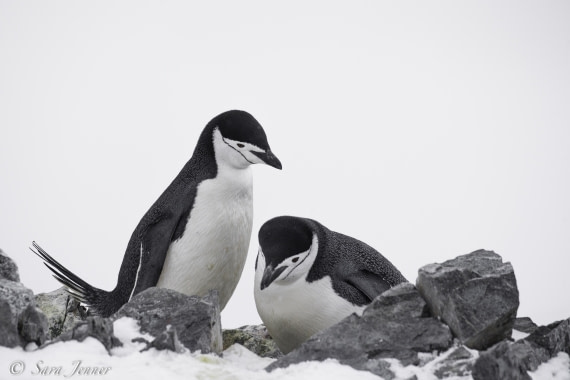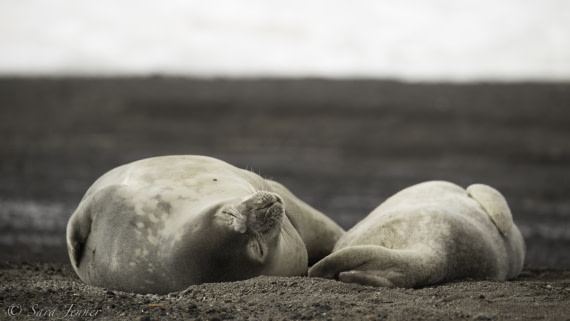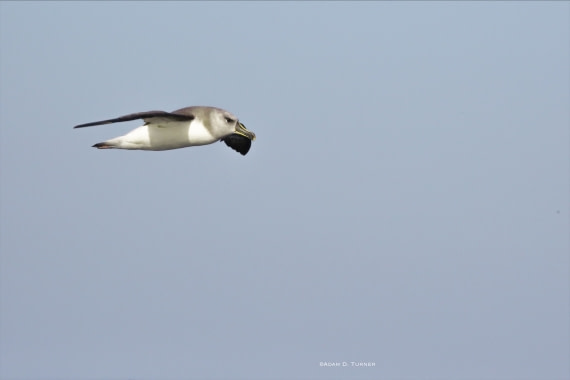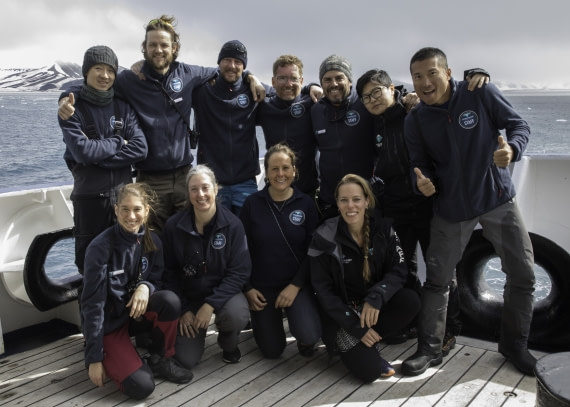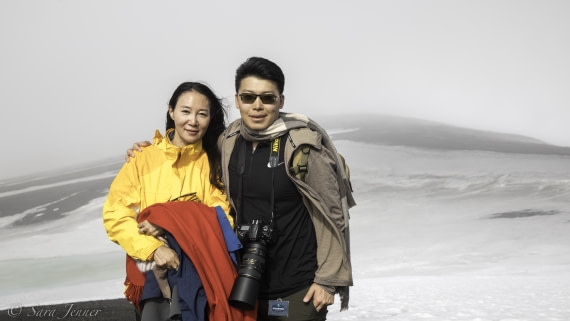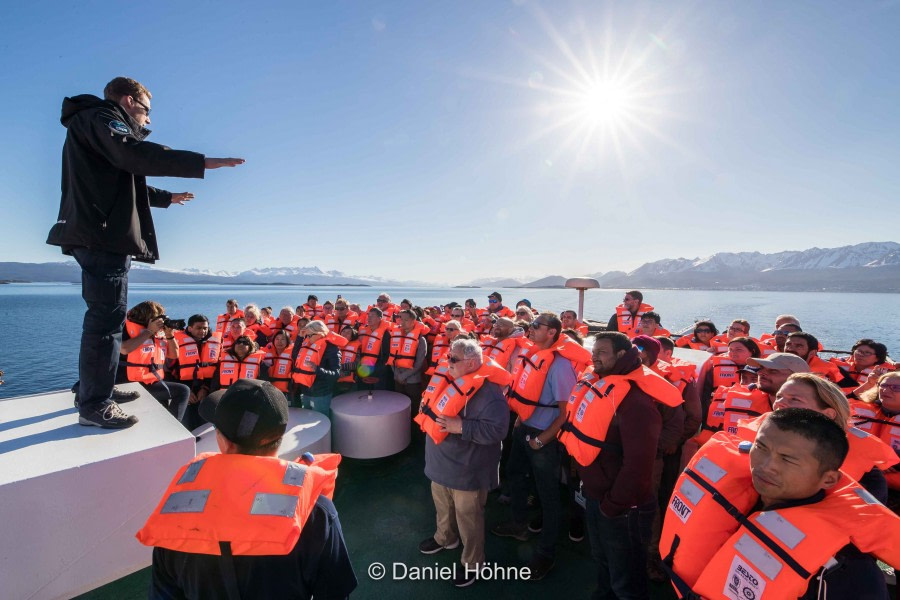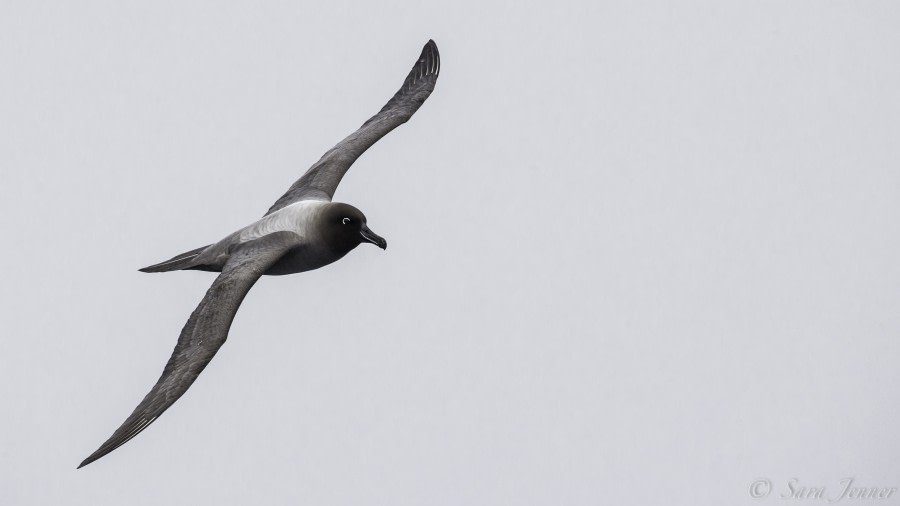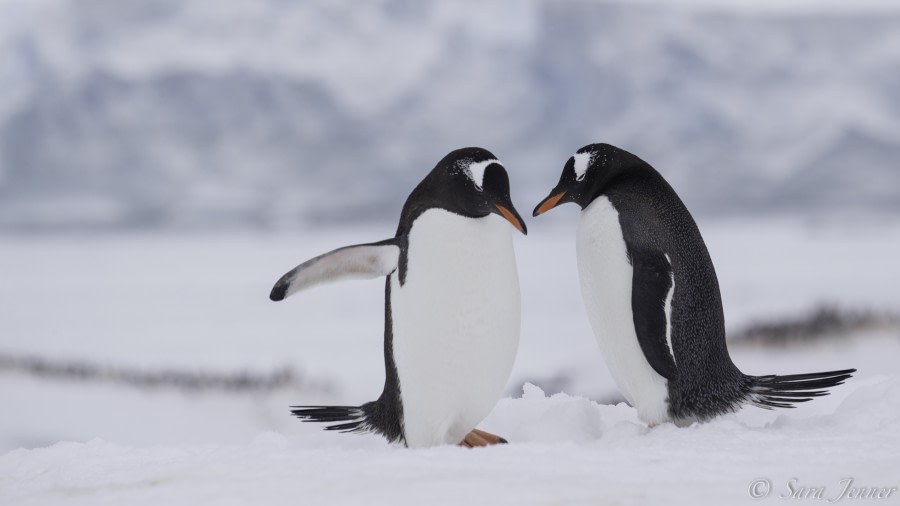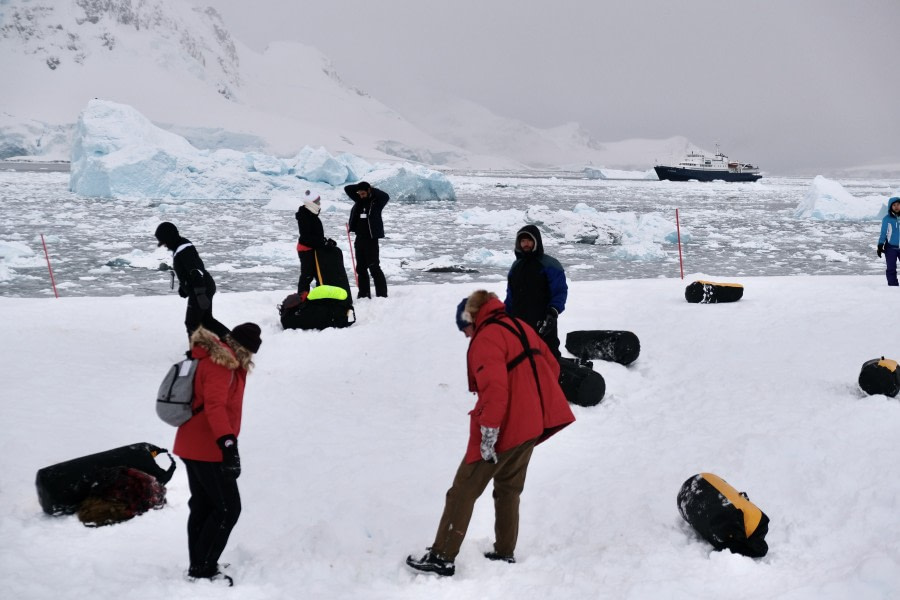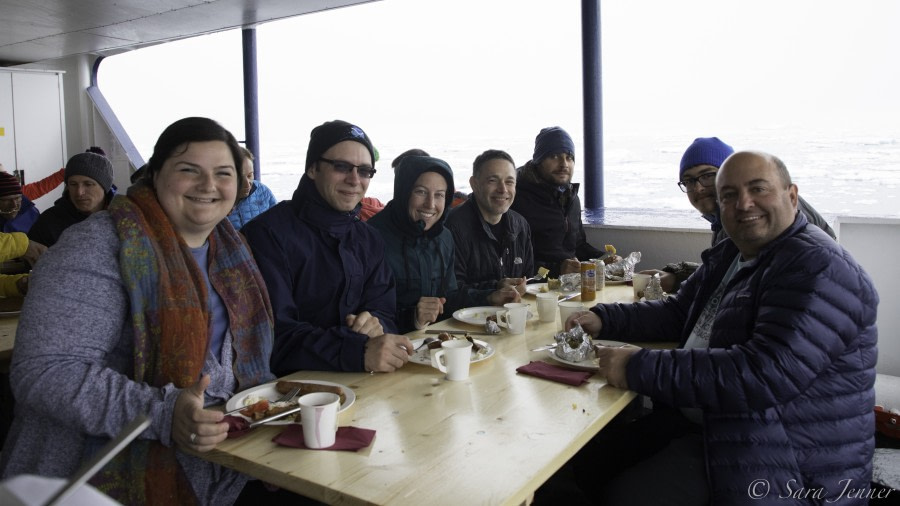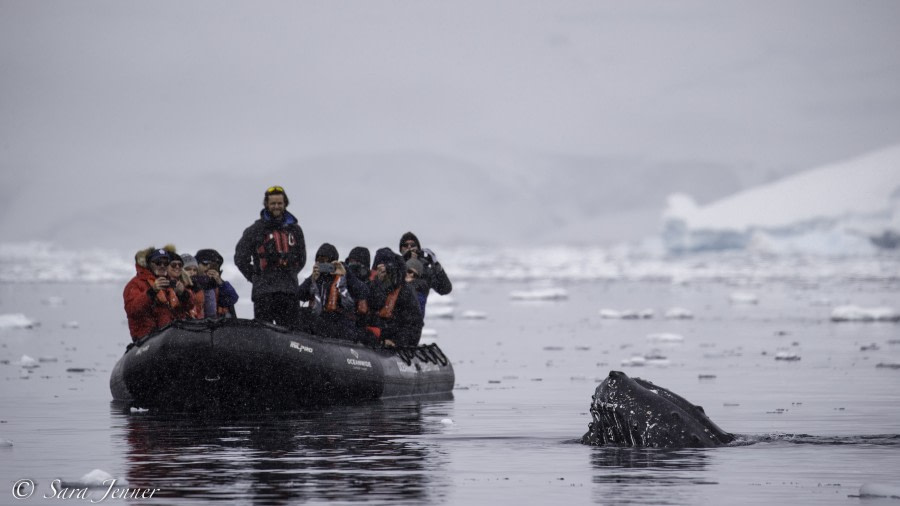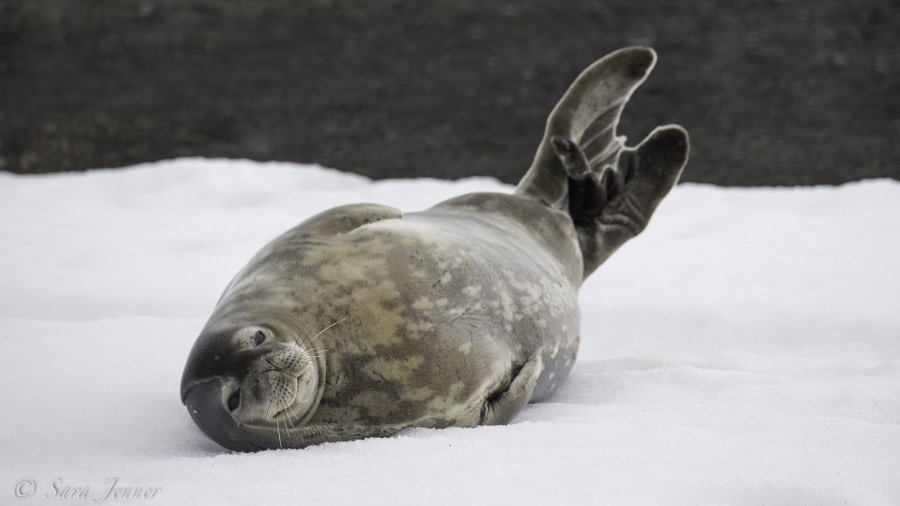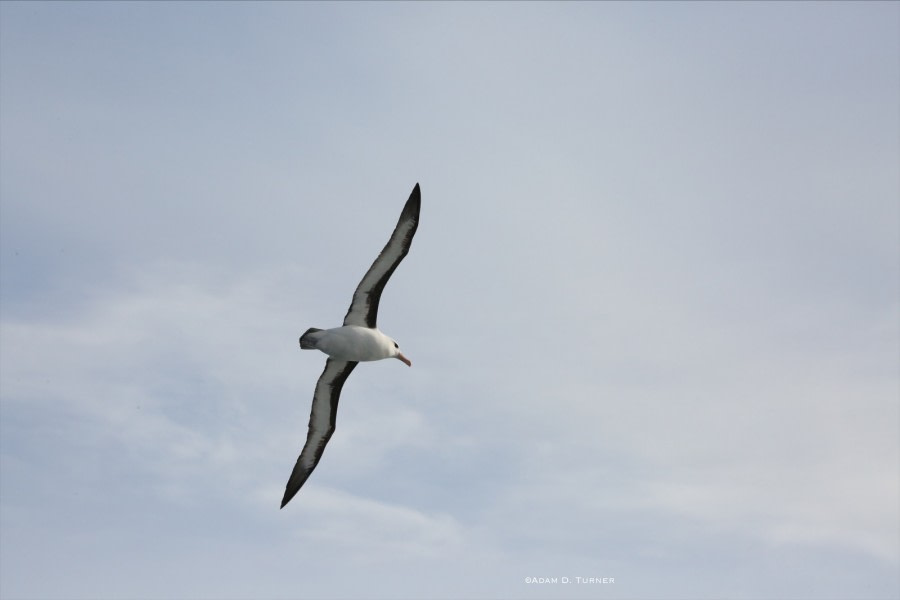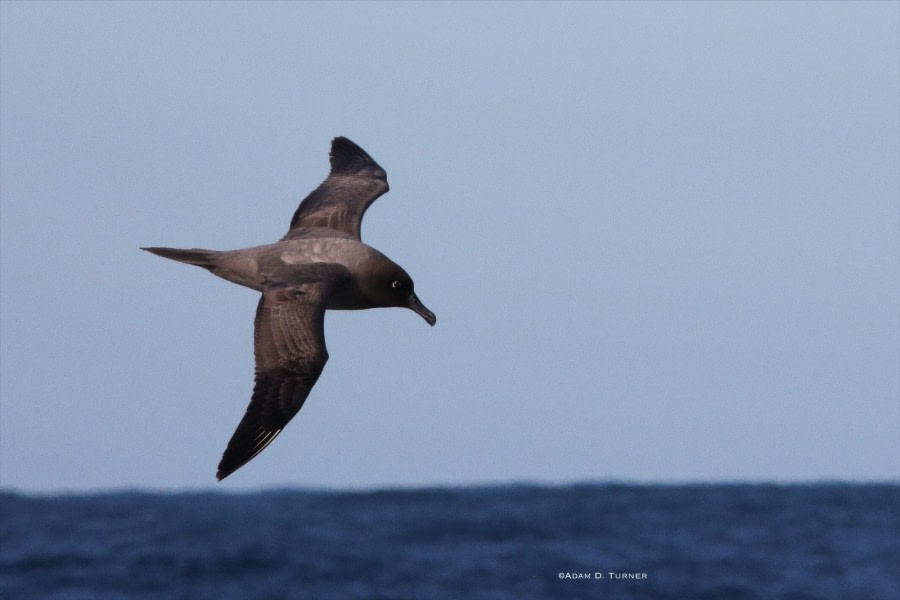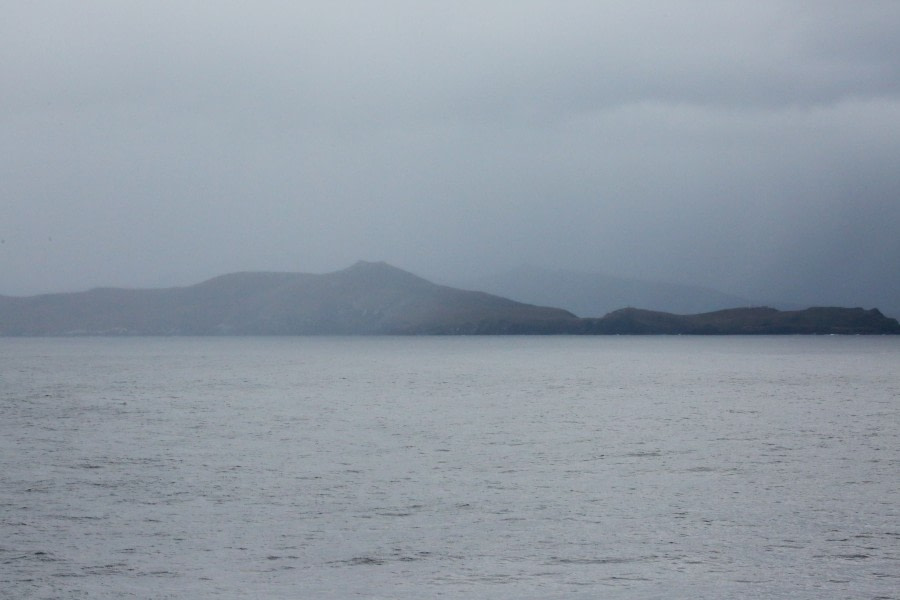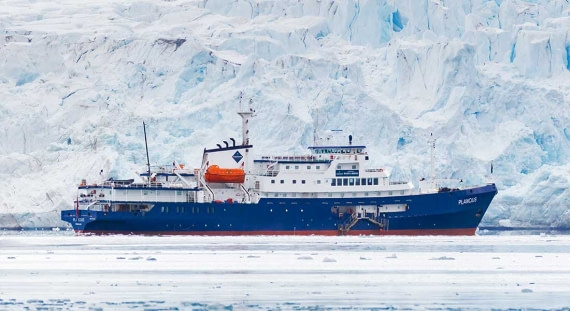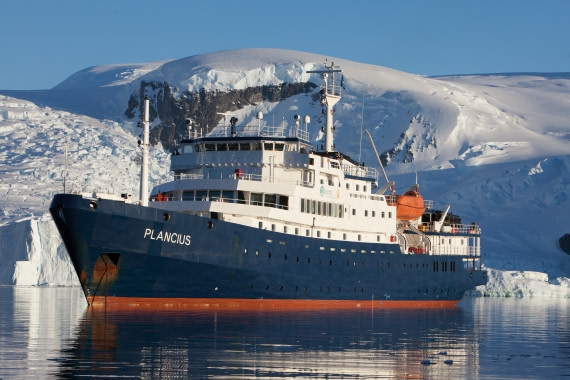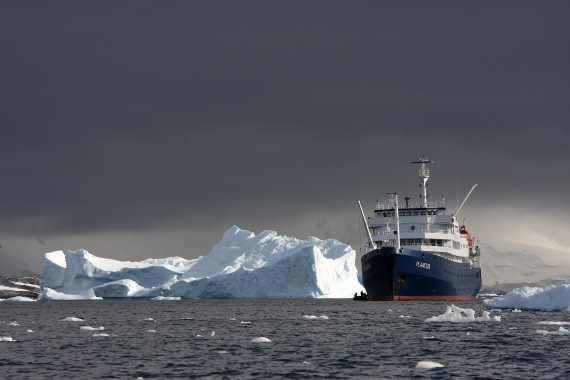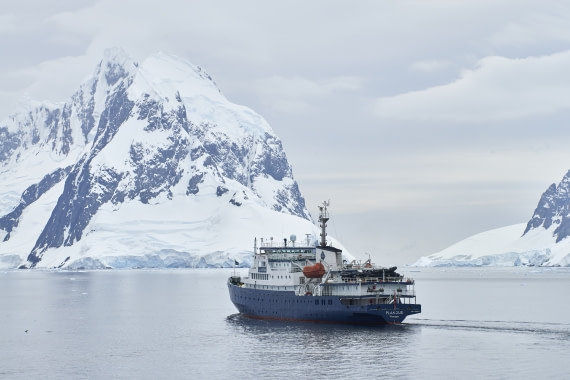| Datum: |
14.11.2019 |
| Position: |
64º 56.4' S / 062º 32.2' W |
| Wind: |
3-5 Knoten |
| Wetter: |
bewölkt |
| Lufttemperatur: |
-3 |
Die Camper kamen nach einer windigen Nacht sehr früh am Morgen zurück zum Schiff und freuten sich auf heißen Kaffee und Frühstück. Unsere erste Anlandung des Tages war Neko Harbour, unsere erste kontinentale Anlandung.
Neko Harbour wurde vom belgischen Entdecker Adrien de Gerlache während seiner Expedition von 1897-99 entdeckt und nach dem Walfangschiff Neko benannt, das zwischen 1911 und 1924 in diesem Gebiet operierte. Der Gletscher hinter dem Neko-Hafen ist äußerst aktiv und kalbt häufig große Eisbrocken, die donnernd in die Bucht platschen. Daher betonte das Expeditionsteam, wie wichtig es sei, sich vom Strand fernzuhalten und auf höherem Boden zu bleiben.
Für uns war es kein Problem, auf höherem Grund zu bleiben, denn auf dem Weg zum Gipfel gab es viele Eselspinguine zu beobachten. Wir folgten einem von unseren Expeditionsführern markierten Weg und bewunderten den frischen Schnee, auf den seit dem letzten Neuschnee niemand mehr einen Fuß gesetzt hatte. Die einzigen Fußabdrücke waren die der Eselspinguine, die sich einen Weg zum Strand gebahnt hatten, um Steine für ihre Nester zu holen. Als wir den Rundweg hinaufgingen, konnten wir hoch oben in der Ferne Menschen sehen. Da wir das einzige Schiff in der Gegend waren, wussten wir, dass es die restlichen Passagiere der Plancius sein mussten. Auf geht's! Der Aufstieg zur Spitze machte uns zu schaffen, aber wir wussten, dass die Aussicht die Mühe wert sein würde. Selbst von den unteren Ebenen aus konnten wir die Eisberge in ihren verschiedenen Formen und Farben vorbeiziehen sehen.
Die Aussicht von oben war atemberaubend. Wir hatten Sitzplätze in der ersten Reihe für die kalbenden Gletscher, die wir hören konnten, bevor wir sahen, welche Teile ins Meer fielen. Es war schwer vorstellbar, wie hoch oben wir wirklich waren, bis wir auf die Pinguine hinunterblickten, die wie kleine Ameisen aussahen. Wir saßen schweigend im frischen Schnee und atmeten tief durch, um alles in uns aufzunehmen. Auch wenn dies nicht unsere erste Landung war, kam es uns dennoch surreal vor, dass wir uns tatsächlich in der Antarktis befanden, umgeben von solch einer natürlichen Schönheit.
Als wir zum Strand zurückgingen, frischte der Wind auf, und unser Landeplatz wurde allmählich von festgefahrenem Eis umgeben. Die Flut zog sich zurück, so dass unsere Zodiacfahrer besonders vorsichtig sein mussten, um uns alle an Bord und zurück zum Schiff zu bringen. Wir wären gerne noch ein wenig länger auf dem Gipfel geblieben, aber wir wussten, dass uns an Bord ein weiteres köstliches Mittagessen erwartete.
Bei unserer zweiten Anlandung besuchten wir Useful Island, die ihren Namen der guten Möglichkeit verdankt, Wale und Robben vom Gipfel aus zu beobachten, wo ein großes zylindrisches orangefarbenes Leuchtfeuer etwa 2 m hoch steht. Die Insel wurde von der belgischen Antarktis-Expedition 1897-99 unter Adrien de Gerlache entdeckt. Als unsere Zodiacs um die Eisberge herumfuhren, landeten wir auf einem felsigen Abhang und wurden von einer großen Weddellrobbe inmitten von Eselspinguinen begrüßt. Wer könnte diesem süßen Hundegesicht schon widerstehen. Wir wanderten die gleichen 100 m Höhenunterschied, die auch die Pinguine zurücklegen, um einen Vorsprung zu haben und den perfekten Nistplatz zu finden. Auf unserem Weg nach oben sahen wir zwei Kolonien von Kehlstreifpinguinen, die bereits ihre Nistplätze für die Saison bezogen hatten. Ihre Paarungsrufe klangen ganz anders als die der Eselspinguine, und wir beobachteten einige Paarungsrituale. Der Gipfel war noch schneebedeckt, und wir wurden mit einem klaren 360°-Rundumblick über die Gegend belohnt. Ruhige See, flauschige Wolken, jede Menge Eisberge: Was will man mehr? Bei der abendlichen Zusammenfassung erzählte uns Chloe von den antarktischen Bären. Wir waren uns ziemlich sicher, dass wir uns nicht in der Nähe von Eisbären befanden, aber als wir aufmerksam zuhörten, erfuhren wir, dass es ein kleines, weniger als einen Millimeter großes Lebewesen namens Tardigrad gibt, das genau wie ein Bär aussieht. Wenn es sich bedroht fühlt, rollt es sich zu einer Kugel zusammen und ist dadurch unzerstörbar. Man findet sie so hoch wie Berggipfel, so tief wie der Meeresboden und sie waren sogar schon im Weltraum! Vor dem Abendessen informierte uns Adam über den nächsten Tag und erzählte uns, dass das Eis in dem Gebiet so dick war, dass die Mitarbeiter von Port Lockroy nicht an den Ort gelangen konnten. Wenn die Mitarbeiter nicht dorthin gelangen konnten, würden wir es definitiv auch nicht durch das Eis schaffen. Also änderten wir, wie in der Antarktis üblich, unsere Pläne aufgrund des Wetters und besuchten morgen Damoy Point als erste Anlandung. Alle machten sich auf den Weg in den Speisesaal zu einem weiteren köstlichen Essen, bevor die Camper zu einer Nacht auf dem weißen Kontinent aufbrachen. Camping Eine Gruppe von 33 Personen aus verschiedenen Teilen der Erde hatte ein wichtiges Treffen auf einem Campingplatz an einem ungewöhnlichen Ort. Sie kamen aus Kanada, dem Norden, Osten, Süden und der Mitte der USA, den Niederlanden, Indien, Spanien, dem Vereinigten Königreich und Argentinien, um diese besondere Zeit am Stoney Point zu verbringen, einem der schönsten Orte in der Nähe der Paradise Bay in der Antarktis. Wir begannen mit einer Zodiacfahrt vom Schiff aus, wobei wir durch die Eisberge fuhren, die ein kürzlich kalbender Gletscher in der Gegend verteilt hatte. Es schneite leicht, und es wehte eine leichte Brise aus dem Osten. Nach einer Sicherheitseinweisung suchten sich alle einen Platz, um ihr Eisgrab zu graben und die Nacht unter den Sternen an einem der kältesten Orte der Welt zu verbringen. Zwei Stunden später waren alle bereit zum Schlafen, die Guides prüften einen nach dem anderen, und die Stille wurde zum Hauptgefühl der Polarnacht. Wir konnten in der Ferne einige Donner hören, weit weg von den kalbenden Gletschern, den Strömungen, die große Eisberge trieben, die dazwischen zusammenbrachen. Wieder Stille. In der Ferne sangen einige Entenvögel, zwei Riesensturmvögel zogen vorbei, ein neugieriger Scheidenschnabel sprang von einem Graben zum anderen auf der Suche nach etwas Besonderem, das er stehlen konnte. Die Zeit verging schnell. Nach sechseinhalb Stunden wachten wir um 4:45 Uhr auf, um unsere gesamte Ausrüstung zu packen und zum Mutterschiff zurückzukehren. Die Zodiacs hatten die schwierige Aufgabe, die Eisberge zu umschiffen, die in der Nacht in unser Lager getrieben waren, aber wir kamen sicher zu unserer geliebten M/V Plancius zurück, wo wir heiß duschten und ein ausgiebiges Frühstück genossen. Fröhliche Gesichter, viel Lachen, Menschen, die lachen, darum geht es: ...., Spaß zu haben.

